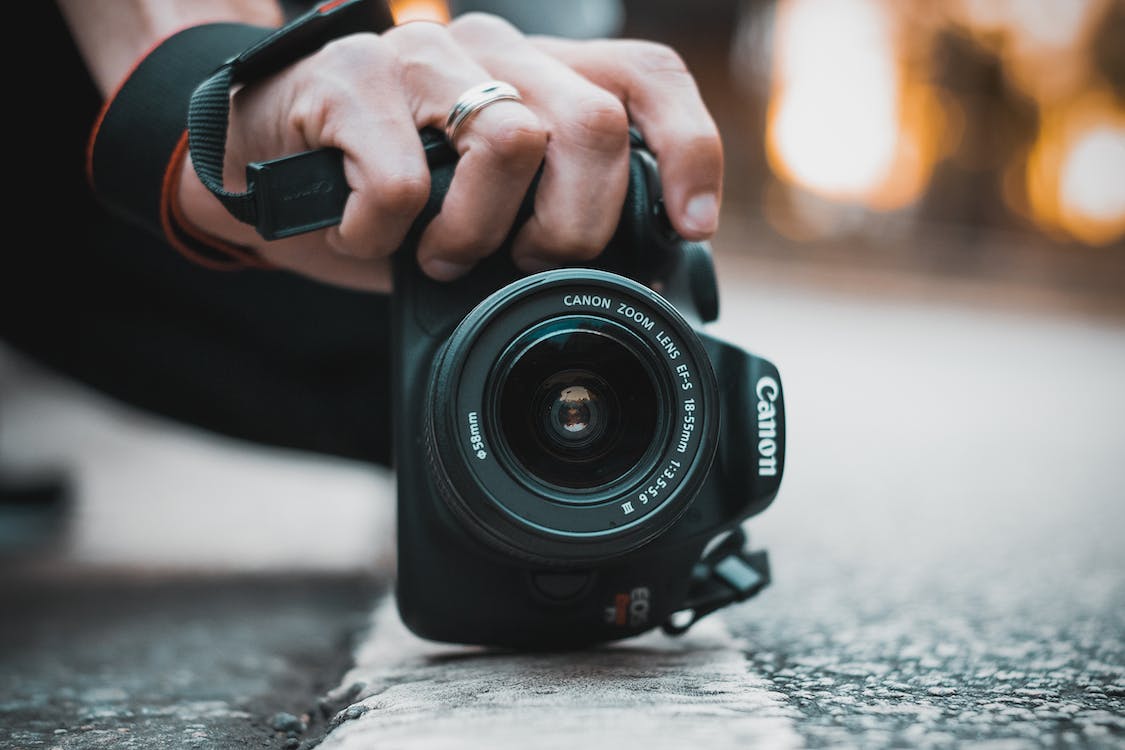Table of Contents
This blog post may contain affiliate links. As an Amazon Associate I earn from qualifying purchases.
While today, most people take all their photos on their phone, true photography enthusiasts still prefer a DSLR camera. But what is a DSLR and why do photographers prefer them? In this article we cover the technical specifics of DSLRs as well as the practical and artistic reasons why you might want to buy one if you’re serious about your photography.
DSLR Cameras Explained
To understand what a DSLR camera is, it’s best to look at their full name, Digital Single Lens Reflex Camera. We’ll assume the camera part we don’t need to explain, but what about “Digital Single Lens Reflex”? The camera is “digital” because the camera’s sensors capture light and convert it into digital signals which can then be stored on a memory card.
The “Single-Lens Reflex” refers to the camera having a built-in mirror system that enables the user to view exactly what will be captured. The mirror which reflects the image to the photographer is the same mirror which reflects light on to the camera’s sensor, giving you a 1:1 relationship between what you see through the viewfinder and what the camera captures. This is crucial because most other cameras do not allow you to see the precise image that will be recorded. As a result, with non-SLR cameras, if you don’t compensate properly while taking the picture, they may reveal a different image than the one you were trying to capture.
Advantages Of Using A DSLR Camera
These are the top reasons why both professional and amateur photographers prefer DSLR cameras.
– Image Quality
The quality of images produced by DSLR cameras are far beyond that of most point and shoot cameras and are superior to phone cameras. Current high-end smartphones will often have around 12 megapixels (MP) while DSLR cameras often have 20MP or more (some even as high as 50MP)
– Accuracy
Unlike non-SLR cameras, the single lens reflex allows you to see exactly what you are going to capture with the lens when you look through the viewfinder.
– Replaceable Lenses
One of the biggest advantages of DSLRs is the ability to swap the lenses. You can easily swap in a wide angle or fish-eye lens in a matter of seconds.
– Adjustable Shutter and Focus Speeds
Most DSLRs have fully customisable shutter and focus speeds.
– Better Low-Light Performance
If you use the right lens, the DSLR’s sensors are powerful enough to capture high-quality images in low light.
– More Durable
Because DSLRs are used by professionals in a variety of climates (mountain, desert, arctic) they are exceptionally durable and resistant to the elements.
Disadvantages Of Using A DSLR Camera
If there were no downsides to DSLR cameras, there would be no other kind. Here are some of the disadvantages to using a DSLR camera.
– Price
DSLR cameras are more expensive that other types of cameras. Even mid-range DSLRs can be around the £1000 mark.
– You Need Accessories
Most DSLR cameras come without a lens or come with a low-quality lens. To get true “professional” looking photos you may need to send several hundreds more on a good quality lens as well as other accessories like an external flash, tripod, etc.
– Bulky/Heavy
DSLR cameras are large and heavy. The mechanical parts of a DSRL camera increase its weight significantly over a fully digital camera. It’s even heavier if you need to carry a bag of accessories around with you too.
– Harder To Use
While you can get higher quality images with a DSLR than a point and shoot camera or a phone, the learning curve is steeper, and newcomers may struggle to get satisfactory results without first taking time to learn photography skills.
– Loud
Due to their moving parts, DSLR cameras are loud compared to point and shoot cameras or phones which are normally silent.
– Require Maintenance
Because they have more moving parts, DSLR cameras require more maintenance, cleaning, and repair than other types of cameras. However, they can last decades if they are cared for well.
How Much Do DSLR Cameras Cost?
Like all technology, there is a real range of options and price points available. The cheapest DSLR cameras which could still be considered decent quality are around the £350 mark and mid-range, industry standard CANON DSRLs can be found for around £1000. There is no upper limit to the price of high-end DSLRs with some of them going for multiple thousands of pounds.
Before you buy any camera, you should always do the following:
- find reviews from real users online who are working at your skill level. If you are a professional photographer, look for reviews from other professionals.
- look online for unedited images taken using the camera and compare them to those taken using competing devices.

